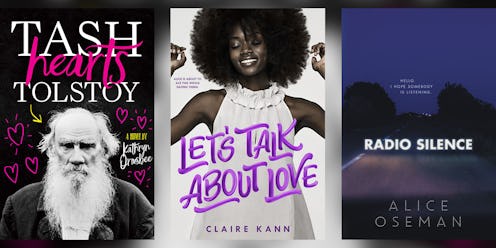
As soon as the calendar pages swish to June, it feels like a collective voice erupts, shouting, "It's PRIDE, baby!" For those who identify as the "A" of the LGBTQA spectrum — A for "asexual" and "aromantic" — there is an extreme lack of visibility throughout the media when it comes to their orientation, and the publishing world is no exception. Few books feature asexual or aromantic protagonists. Even fewer name their identification outright. Within the YA sphere, however, a genre through which young readers routinely explore and discover their own sexuality, there exists a tight – albeit small — collection of books with asexual protagonists.
"Asexual," or "ace" for short, implies a person is not sexually attracted to other people — not to men, not to women, not to non-binary people. For those outside the ace community, particularly those whose feelings of love and lust often feel inextricably intertwined, there is sometimes an unwillingness to understand an orientation that seems so opposite their own.
Kathryn Ormsbee, whose YA novel Tash Hearts Tolstoy follows an asexual-identified teen embarking on a path of internet viral fame, longed for a book that featured someone who felt like she did growing up. So she wrote one.
"In the US, we live in a culture that’s saturated with sex and hypersexualization, and while I am all for sex positivity, I think it’s so easy for those in the ace community to feel alienated in this environment," Ormsbee, who identifies as demisexual, tells Bustle. "Books that feature asexual characters give voice and presence to readers who might not see themselves represented anywhere else."
These three books bust down stereotypes, the few that exist about asexual protagonists and then some. The characters are alive and passionate and confused and in love and heartbroken and trying, always, to figure it out, just like everyone else.
'Let's Talk About Love' by Claire Kann
Alice's summer is not going as planned. There's the apartment her friends rented without her; there's the girlfriend — er, ex-girlfriend — who ended things when Alice came out as asexual. The only reliable thing in Alice's life is her job at a local library... until that, too, is complicated by a crush on the new employee, Takumi.
"Alice herself was the inspiration," author Claire Kann tells Bustle. "She came to me fully formed and confident in who she was. It required a lot of research to unpack my own biases and to write the story that genuinely reflected Alice’s experience since asexuality is a spectrum."
'Radio Silence' by Alice Oseman
"The absolute scarcity of asexual representation was one of the reasons I was so determined to write it into Radio Silence," Alice Oseman tells Bustle.
At first glance, Frances and Aled seem a likely pair: Frances studies. Aled gets straight A's. Boy and girl, bookworms both. But it's how they come together — not in love, but in making a podcast — that their adventure together begins.
"Most people 'in real life' don't know what asexuality is, or if they do, don't consider it a valid identity," says Oseman. "It's got a reputation for being a 'special snowflake' identity - just something that people decide to call themselves because they want to feel special. It was very important to me to show that asexuality is a real, valid identity, and that it can be a great struggle to share that even with those closest to you."
'Tash Hearts Tolstoy' by Kathryn Ormsbee
"Throughout the publishing process of Tash Hearts Tolstoy, I struggled with the knowledge that there aren’t nearly enough ace rep books out there, and for that reason, I think there’s more pressure on the books that do exist to provide representation for everyone on the ace spectrum," says Ormsbee. "And of course, that’s impossible. Tash isn’t a book for everyone. The asexual experience is vast and nuanced, and not only is every ace reader unique, every ace reader has different tastes and reading preferences. Tash’s experience won’t resonate with many, and others might simply not like the arc or writing style."